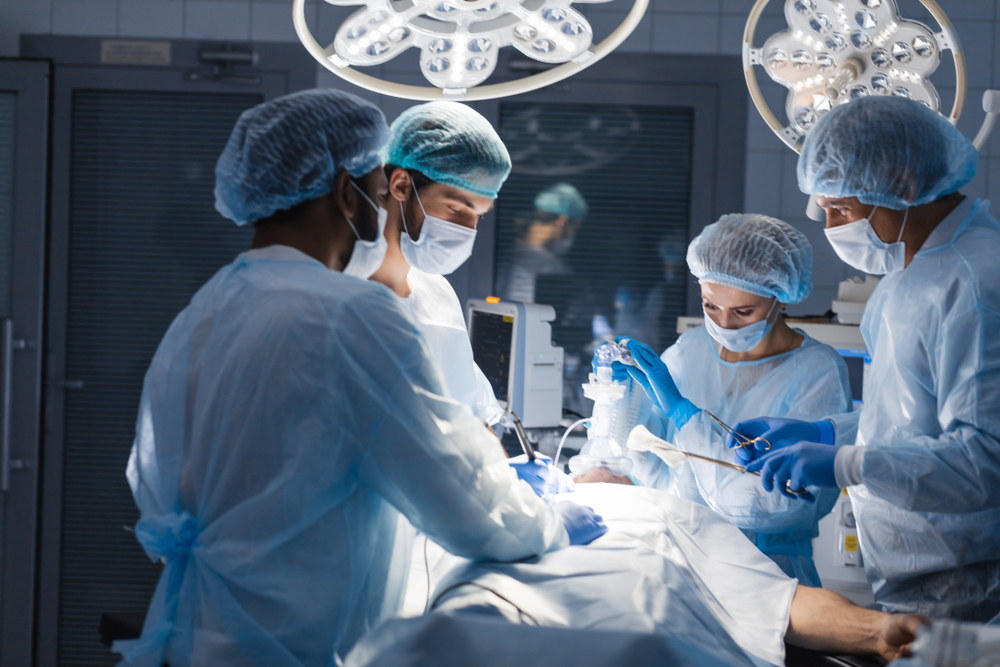Standard precautions for HIV are the steps taken so as to avoid accidental transmission of the infection to caregivers of HIV infected persons . The importance of adopting standard precautions lies in preventing incidence of healthcare associated HIV infection .The various standard precautions related to care of patients were laid down in the form of universal precautions by the Centre for Disease Control (CDC) ,USA in 1987 .
UNIVERSAL PRECAUTIONS IN PATIENT CARE :
The foremost guideline is that each patient has to be treated and precautions observed as if he or she has the infection. Protective barriers such as gloves ,masks etc. are to be worn while handling any persons body fluids. The body fluids which must be handled with adequate precautions are blood, semen, vaginal secretions, pleural fluid, pericardial fluid, cerebrospinal fluid, peritoneal fluid, synovial fluid and amniotic fluid. The body fluids which are not included in the universal precautions are feces, urine, sweat, tears, saliva, nasal secretions, vomitus unless they are contaminated with significant amounts of blood .
The cornerstone of any precautionary program is providing proper education and training for the health care workers. The training should cover the various aspects of HIV infection such as the modes of spread, method of biomedical waste disposal, and posting of warning signs to others. The education regarding HIV infection should also include the approach towards handling the social stigma and discrimination issues associated with the disease .
After a brief outline regarding standard precautions for HIV care, we will read in little detail about the various things included in standard precautions for HIV.
MOST IMPORTANT UNIVERSAL PRECAUTIONS :
- It is important to wear gloves while inserting a cannula or drawing blood as there is high risk of exposure to the persons blood .
- Used needles and sharps should be disposed off in puncture proof containers so as to avoid accidental injury to the person handling waste. Such containers should be placed as near as possible to the site of procedure .
SHOULD ONE USE GLOVES WHILE TOUCHING OR EXAMINING AN HIV INFECTED PERSON ?
Routine wearing of gloves for examining an HIV patient is not recommended. HIV does not spread by touching an infected persons intact skin. But ofcourse if there is an open wound, it is important to protect yourself from exposure to the blood or discharge from the wound by wearing gloves .
ARE THERE ANY EXTRA PRECAUTIONS TO BE TAKEN WHILE PERFORMING PROCEDURES ON A PERSON WHO IS HIV POSITIVE ?
Apart from the routine precautions like wearing gloves while handling body fluids of a person, there are some additional steps to be taken while performing procedures on a person who is known to be HIV positive. The various recommendations can be grouped under two headings :
BARRIER METHODS
- Wearing double gloves reduces the risk of accidental transmission by 5 times .
- It is important for the operator to wear cap and mask .
- Eye glasses or shields for the person performing the procedure is important .
- Plastic aprons or gowns are to be worn .
- Protective boots are important.

precautions for HIV
METHODICAL APPROACH
A well planned methodical approach in performing procedures on HIV positive individuals will prevent accidental exposure of health care workers to the infection .
- Hasty work should be avoided .
- Assistants and supporting staff should be minimised .
- Large incisions are preferred so as to minimise need for retraction by assistants .
- Surgery should be done with meticulous attention towards minimising blood loss .
- Instruments should be transferred carefully in kidney trays. Clumsy handling of instruments and sharps should be avoided .
IS PREOPERATIVE HIV TESTING MANDATORY FOR ALL ?
As per the revised recommendations of CDC in 2006, HIV screening is recommended for all in health care settings including pregnant women. The patient is notified about the testing. If the patient declines or opts out of getting tested, it can be omitted. Written informed consent should not be required. General consent for medical care is sufficient and encompasses testing for HIV. Therefore preoperative screening for HIV is recommended as a routine so as to reduce incidence of health care associated transmission of the infection .
SCREENING FOR HIV
Screening tests are used to identify those who are infected among otherwise asymptomatic persons. Even if screening test for HIV is negative one cannot be 100% sure that the person is not infected. The person may be within the window period during which screening tests cannot identify infected persons. The antibodies against HIV which are detected by test kits are not yet formed while in the window period. So despite screening for HIV, universal precautions must be taken while handling every patient. A positive screening test may prompt you to adopt additional precautions .
WHAT IS THE MOST COMMON MODE OF HEALTHCARE ASSOCIATED HIV INFECTION ?
Accidental needle stick injury is known to be the most common mode of transmission of HIV infection to healthcare workers. Most of the needle stick injuries happen as a consequence of improper disposal. The chance of a person acquiring HIV infection after an accidental needle stick injury with a contaminated needle is 0.3%.
CAN YOU GET HIV INFECTION AFTER INJURY WITH A VERY FINE NEEDLE ?
If the needle is contaminated with an HIV infected persons blood, it has the potential to transmit HIV infection in case of an accidental needle stick injury. Of course the risk of transmission rises with increase in bore diameter of the needle. Besides a hollow needle has higher risk of transmission when compared to a solid needle.
Deeper the injury inflicted by a needle higher is the risk of HIV transmission. That is where wearing double gloves helps as the needle has to penetrate deeper before it inflicts body injury .
If there is visible blood on the needle, higher will be the risk. If the prick is directly into a vein or artery, the risk of transmission of infection will be very high. The viral load of the blood contaminating the needle also determines the risk of transmission. Higher the viral load, higher the risk .
RISK OF TRANSMISSION OF HIV TO THE SURGEON
While operating on a HIV patient, the surgeon is under risk of accidental transmission of infection. The risk is considerably high if the surgery lasts for more than 3 hours. If the blood loss is more than 300 ml the risk of accidental transmission may be high. There is considerable risk of transmission while performing major vascular, abdominal and gynaecological surgeries .
Now that you have read a lot about standard precautions to be taken while handling an HIV infected person, it would be valuable to know what are the immediate measures to take in case of an accidental exposure .
WHAT IS THE FIRSTAID TO BE DONE IN CASE OF AN ACCIDENTAL EXPOSURE ?
In case of an accidental exposure, local treatment of the site of exposure is most important. If skin is the site exposed, as in case of a needle stick injury, never put the finger in your mouth reflexly. Wash the exposed skin thoroughly with soap and water .
If there is an accidental splash of contaminated body fluids into the eye, irrigation with fresh water must be done as priority .
If oral cavity has been exposed to infected fluids, spit it out immediately and rinse with water several times .
In case of health care related exposure, prompt reporting of the incident should be done to the concerned authority. A detailed account of the exposure including time, nature of exposure etc should be given .
After the initial first aid and reporting of the exposure, risk of HIV transmission in the present exposure should be assessed. The patient should be tested after obtaining proper consent. If the patient is known to be HIV positive, the health status of the patient should be assessed. The viral load in the patient will give an idea about the patient’s infectivity. If the patient is on anti- retroviral therapy, the possibility of drug resistance has to assessed. The health care personnel who was exposed should also be tested so as to determine the status at the point of occurrence of the incident .
CAN HIV BE PREVENTED AFTER EXPOSURE ?
After a potential health care related exposure to HIV, the infection can be prevented from setting in by the use of certain drugs. But the drugs are not 100% efficient in preventing the infection and the person exposed still carries a small risk of being infected. The drug therapy used to prevent HIV infection following a potential exposure is called post exposure prophylaxis.
WHAT IS PEP ?
PEP is post exposure prophylaxis. Post exposure prophylaxis following potential exposure to HIV infection is most effective when initiated within 72 hours of exposure. The drugs need to be continued for about 28 days.
Despite discovery of post exposure prophylaxis, adopting standard precautions while handling patients is of great importance as no drug is 100% protective against HIV infection. Besides post exposure prophylaxis is associated with many undesirable side effects . Hence prevention is always better than cure and adopting universal precautions is the first step towards prevention of health care related HIV transmission.
